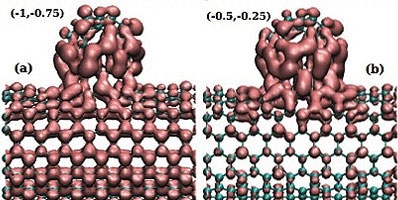| Jan 02, 2013 |
Computational physics moulds the future of nanoelectronic devices
|
|
(Nanowerk News) Fundamental studies based on computational physics are an essential part of many different branches of research – from medical technology to mobile communication. Javad Hashemi has studied the electronic properties and conductivity of different structures based on carbon nanotubes in his doctoral dissertation for the Aalto University Department of Applied Physics.
|
|
Javad Hashemi's research is an effort to bridge the gap between experimental and theoretical physics.
|
|
"In computational physics we have two general areas: method development and application, which is simulating actual nanoscale systems, mostly with supercomputers. My work is a combination of both," describes Hashemi.
|
|
Hashemi has done basic research in both density-functional theory and density-matrix theory. The first is used to calculate the electronic properties of a physical system based on its electronic density.
|
|
Density functionals have many shortcomings because of the approximations we use for it. A density matrix, on the other hand, can give more accurate results and allows us to calculate the properties of electronic systems more precisely.
|
|
"The study of nanotube structures and graphene is a very hot topic in nanoelectronics nowadays, and my computational research can give explanations for phenomena observed in experiments."
|
 |
|
The basics of bendable and transparent nanoelectronics
|
|
When applied to "real-world" devices, carbon nanotubes are never complete and pristine: defects and imperfections affect the flow of electrons. Hashemi's research strives to understand what is the effect of defects on the conductivity of nanotubes and how to use these properties to engineer electronic devices.
|
|
"We have studied carbon nanotubes, which are cylinders made of a single atomic layer of carbon and tried to find out how the electronic current changes when applied through the tube. The effects of the defects and perturbations, for instance of foreign hydrogen atoms, on the electronic transport in the tubes must be known."
|
|
Hashemi paints a prospective application for the carbon nanotube structures: very thin, transparent and bendable electronic devices, for instance mobile phones.
|
|
"Good candidates for flexible electronic devices are carbon nanotube networks: a mat-like network on which there are many carbon nanotubes. Therefore, we need to know, how the current goes from one nanotube to another and another."
|
|
This is the complicated physics behind flexible electronic devices. Even though fundamental research like this may seem something far off from real life now, it is the base of all modern technologic devices, and it will help to create better devices for easier life in the future.
|

